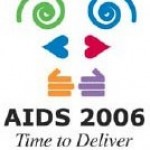August 16, 2006 (AIDSmeds)—According to the World Health Organization (WHO), morethan one million people in sub-Saharan Africa are currently receivingHIV treatment. This, WHO HIV/AIDS Director Kevin De Cock, MD, reportedthis morning at the XVI International AIDS Conference (IAC) in Toronto,is a tenfold increase in treatment access in the region since December2003.
Dr. De Cock explained that in low- andmiddle-income countries, approximately 1.6 million HIV-positive peoplewere receiving HIV treatment by the end of June 2006. This, heexplained, is a 24% increase over the 1.3 million people who had accessto the drugs in December 2005, and four times the 400,000 peoplereceiving treatment in these countries in December 2003.
WhileDr. De Cock reported significant increases in treatment access inseveral regions of the world, he also emphasized that there isconsiderable work ahead to reach the goal of providing universal accessto HIV prevention programs, treatment, care and support by 2010.
Dr.De Cock laid out WHO’s vision for continuing to expand HIV treatmentaccess. This included calling for new action to overcome barriers that,if unaddressed, will slow the rate of expansion in access to HIVtreatment in the future.
According to WHO, there are38.6 million persons living with HIV globally. Approximately 6.8million people living in low- and middle-income countries requireantiretroviral therapy now. With 1.6 million HIV-positive people inthese countries currently receiving treatment, this means that HIVtherapy is only in the hands of 24% of people who need it.
Coverageof HIV treatment varies by region, from 5% in North Africa and theMiddle East, 13% in Eastern Europe and Central Asia, to 75% in LatinAmerica and the Caribbean.
Sixty-three percent ofHIV-positive on antiretroviral therapy in low- and middle-incomecountries today are African. Dr. De Cock noted that while sub-SaharanAfrica has the greatest number of people on treatment among low- andmiddle-income countries, it also has the greatest need – the regionaccounts for 70% of the global unmet treatment need.
Lookingforward, Dr De Cock outlined five strategic directions, each of whichrepresents a critical area where the health sector must lead ifcountries are to make progress towards achieving universal access, andon which WHO will focus its technical assistance. These includeexpanding HIV testing and counseling; maximizing preventionopportunities in health care settings; increasing access to treatmentand care; strengthening health systems; and investing in strategicinformation.
While stressing that prevention, treatment,and care are inextricably linked, De Cock called for an increasedemphasis on prevention efforts where HIV transmission is most intense.He also emphasized the need to be guided by science – and not politics– when determining the effectiveness of prevention intervention.
IAC: Challenges of Reaching Countries in Need





Comments
Comments